Youth Goalkeeper Gloves: A Parent's Guide
As a parent, there’s nothing more fulfilling than watching your child pursue their passion on the field, especially when that passion is goalkeeping. Perhaps you’ve watched your child make incredible saves but also seen them struggle with gloves that don’t fit right or lack the grip needed for optimal performance. As they grow and develop as a goalkeeper, it becomes evident that the right equipment is more than just a luxury—it’s a necessity.
For young goalkeepers, the right youth goalkeeper gloves can make all the difference, impacting their performance, safety, and most importantly, their confidence. Properly fitted gloves protect their hands, enhance grip, and allow them to focus on making those crucial saves instead of worrying about discomfort. As a parent, understanding the importance of choosing the right pair of junior goalkeeper gloves is key to supporting your child’s growth in the sport.
In this guide, we’ll walk you through the essentials of selecting the best soccer goalie glove for your young goalkeeper. From understanding glove sizes to choosing the right type based on their playing style, this guide covers all the key aspects to help you make an informed decision.
Choosing the Right Size and Fit
For young goalkeepers, proper sizing is critical, as growing hands can quickly outgrow a pair of gloves. Choosing the right youth goalkeeper gloves that fit snugly yet comfortably is essential to ensure that your child has the best possible grip and performance. Gloves that are too tight may cause discomfort or limit movement, while gloves that are too loose can reduce control and expose the goalkeeper to injury.
Regular measurements are key—especially for young goalkeepers, whose hands can grow quickly. It’s important to measure your child’s hands frequently to ensure their gloves still fit properly. This can help avoid the disappointment of a child struggling with gloves that no longer provide the support or comfort they need.
To accurately measure your child’s hands for junior goalkeeper gloves, start by measuring from the tip of the middle finger to the base of the palm. This will give you the hand length, which will be the foundation for choosing the right glove size. You should also measure the circumference of the widest part of the palm, excluding the thumb. By combining these two measurements, you can get an accurate sense of the glove size.
When choosing soccer goalie gloves for youth players, it’s essential to keep in mind that sizing can vary slightly between manufacturers. The size of a youth goalkeeper glove may differ between brands, so it’s helpful to refer to specific size charts provided by each manufacturer. For example, a youth size 7 from one brand might fit differently from a youth size 7 from another brand. To avoid confusion, consult a trusted source for guidance on which brands best suit your child’s measurements.
Common Glove Sizes for Youth Goalkeepers:
-
JR Size 4 or 5: Small keeper, age 7 to 9 years old, height 4'6" to 4'8"
-
JR Size 6 or 7: Medium to larger youth keeper, age 10 to 12 years old, height 4'10" to 5'0"
-
Size 7 (Adult): Small adult or large youth keeper, height 5'2" to 5'4"
Be sure to measure both of your child’s hands and choose the larger size for the best fit. Keep in mind that as your child’s hands continue to grow, they may need new gloves more frequently.
Key Features to Consider
When choosing youth goalkeeper gloves, there are several key features to consider to ensure your child has the right equipment for training, matches, and long-term development. It's essential to find a balance between durability, protection, comfort, and affordability to get the most out of their gloves while keeping your budget in check.
Durability
Youth goalkeepers often face rigorous training sessions and tough matches, so durability is an important factor when selecting junior goalkeeper gloves. Gloves made with high-quality latex and reinforced stitching will be able to handle the constant wear and tear associated with intense play. However, it's essential to know that latex gloves, while providing superior grip and performance, wear out faster, especially on artificial turf. For younger players who need gloves that last longer, you may want to consider gloves made with a more durable synthetic material that will offer a longer lifespan, but at the cost of a slightly reduced grip.
Protection
Injury prevention is always a priority for young players. Finger protection and wrist support are crucial features to look for in soccer goalie gloves. Some gloves come with a spine or support system built into the fingers to prevent hyperextension or finger injuries during a game. Additionally, wrist straps and adjustable closures help secure the gloves in place, offering added stability. Protection ensures your child is safe while making those diving saves or handling the ball in tricky situations.
Comfort
Comfort is a top priority when it comes to youth goalkeeper gloves. If the gloves don't feel comfortable, your child may become distracted or have difficulty playing at their best. Look for gloves that provide a snug, yet flexible fit that supports the natural movements of the hands and fingers. Materials like neoprene or mesh allow for breathability and help keep hands cool and dry during long matches. Padding or cushioning in the palms and fingers can also enhance comfort without sacrificing performance, allowing your child to focus on their game.
Affordability
The right soccer goalie gloves should also fit your budget. While professional goalkeeper gloves often come with premium features, there are plenty of options that balance quality and cost for younger players. Youth goalkeeper gloves come in a wide range of price points, so consider your child’s level of play and how often they use the gloves. For beginners or casual players, more affordable gloves may offer sufficient durability and performance. However, if your child is playing at a competitive level, investing in higher-quality gloves could make a noticeable difference in their confidence and performance.
Top Brands for Youth Goalkeeper Gloves
Elite Sport
Known for their high-performance gloves, Elite Sport offers an excellent selection of gloves designed for youth players. Their gloves are made from high-quality latex, providing superior grip and comfort. They offer different models tailored to varying weather conditions and playing surfaces. For younger players, Elite's junior gloves combine durability and performance, with a focus on keeping the hands comfortable during intense training or matches.
Reusch
Reusch is a renowned brand in the world of goalkeeper gloves, and their youth goalkeeper gloves live up to the brand's reputation. Their gloves are designed for a range of skill levels, from beginners to advanced players. The Reusch Fit Control and Reusch Pulse lines are particularly popular among younger keepers, offering a good balance of protection, grip, and flexibility. The brand's emphasis on finger protection and wrist support makes them an excellent choice for growing hands.
Storelli
Storelli focuses on providing gloves that offer a combination of durability, comfort, and advanced technology. Known for their protection features, Storelli gloves are great for players who need that extra support, especially around the fingers and wrists. Storelli's gloves are perfect for goalkeepers who need to balance comfort with durability and often play on artificial turf or in various weather conditions.
Suitable Glove Types for Different Age Groups and Skill Levels
Beginners (Ages 6-9)
For younger, beginner players, a training glove or all-weather glove is ideal. These gloves are designed for durability and comfort over performance, making them perfect for kids who are still learning the game. Brands like Reusch offer gloves with synthetic latex that can withstand the rough play of youth training sessions without sacrificing too much grip. These gloves tend to be a bit thicker and more durable, so they last longer through the learning stages.
Intermediate Players (Ages 10-12)
As players advance, they will start focusing more on performance, so a matching glove or hybrid glove becomes ideal. These gloves are a mix of performance and durability, with latex that offers a great grip for catching the ball. Elite Sport provides excellent models for this group, as their gloves are specifically engineered for players who want to feel more connected to the ball. At this level, protection features, such as finger protection or wrist straps, can help ensure safety while still providing top-tier performance.
Advanced Players (Ages 13 and Up)
For older, more experienced players, professional goalkeeper gloves (or near-professional-level gloves) offer the best combination of grip, comfort, and protection. Reusch and Storelli offer gloves with advanced latex materials that deliver excellent performance, even under extreme weather conditions. These gloves are often designed with a more snug fit and features such as negative cuts or roll finger cut for a more responsive feel. At this level, performance is key, but injury prevention through features like fingertip protection and padded palms is essential for young keepers looking to excel.
Maintaining Youth Goalkeeper Gloves
Proper maintenance of youth goalkeeper gloves is essential to ensure they last longer and maintain their performance throughout the season. Here are some simplified instructions and tips for keeping your child’s gloves in top shape:
1. Cleaning the Gloves
-
Wash after every use: After training or a match, it’s important to clean the gloves to remove dirt, sweat, and bacteria. This will prevent the latex from deteriorating and help maintain the grip.
-
Hand washing: Use a mild, low-foaming soap like a specialized glove wash (e.g., Reusch Re:Invigorate Glove Wash). Simply fill a sink or basin with lukewarm water, apply a small amount of soap, and gently scrub the gloves with your fingers. Avoid using harsh soaps like dish detergent, as they can dry out the gloves.
-
Rinse thoroughly: After washing, rinse the gloves until all soap is removed. Squeeze out excess water gently—never wring the gloves, as this could damage the stitching.
2. Drying the Gloves
-
Air dry: Always air dry the gloves by hanging them in a well-ventilated area, away from direct sunlight or heat sources (such as radiators). Direct heat can dry out the latex, causing it to crack or lose its grip.
-
Avoid machine drying: Never use a dryer, as this can severely damage the gloves’ latex and stitching. It’s important that gloves dry slowly to maintain their structure and flexibility.
3. Storing the Gloves
-
Store them separately: When the gloves are not in use, avoid storing them with the palms together. This can cause them to stick, leading to potential damage when you try to separate them. Instead, store them in a glove bag or place them in a well-ventilated space.
-
Don’t store them wet: Never leave wet gloves in a bag for long periods of time. If you can’t wash and dry the gloves immediately, wipe them down with a moist towel or cloth to remove excess dirt and sweat. This will help keep them fresh for the next game.
-
Use a glove bag: A glove bag is a great way to store gloves, keeping them safe and allowing the latex to breathe.
4. Additional Tips
-
Avoid dirt build-up: After playing, wipe the palms of the gloves with a damp towel to remove any dirt and debris. This helps prevent the latex from wearing down too quickly.
-
Keep gloves clean: Regular maintenance of gloves can prevent odors and bacteria from building up, ensuring they remain in good condition.
Frequently Asked Questions
How often should I replace my child's gloves?
Youth goalkeeper gloves experience wear and tear quickly, especially with regular training and games. Typically, gloves should be replaced every 6-12 months, depending on how frequently they are used. If your child uses their gloves multiple times a week, you may need to replace them more often. Keep an eye on the condition of the gloves, especially the grip and latex, to determine when it’s time for a new pair.
What are the signs that my child needs new gloves?
There are several signs that your child’s gloves may need replacing:
-
Loss of grip: If the gloves no longer provide the same level of grip, especially in wet conditions, it’s time for a new pair.
-
Tears or holes: If the latex is torn or there are holes in the gloves, they are no longer offering the protection needed.
-
Worn-out latex: Over time, the latex will wear down, causing the gloves to become less effective. If the palms feel smooth or have significant wear, it’s time for a replacement.
-
Discomfort: If your child complains that the gloves no longer fit comfortably or feel too loose or tight, a new pair may be necessary.
Are there any specific features I should look for in youth goalkeeper gloves?
When choosing youth goalkeeper gloves, consider the following features:
-
Grip: Look for gloves with good grip, especially for younger players still developing their handling skills. Latex palms provide the best grip, but they wear out faster than synthetic options.
-
Protection: For younger goalkeepers prone to finger injuries, consider gloves with extra finger protection or a spine system to reduce the risk of hyperextension.
-
Fit: Make sure the gloves fit snugly but comfortably, without being too tight or too loose.
-
Durability: Consider a pair of gloves that can withstand the wear of regular practice sessions. Synthetic latex offers more durability, while professional-grade latex provides better grip but wears out faster.
-
Budget: There are various options available for different budgets. For practice sessions, more affordable gloves might suffice, while for games, consider gloves that offer better performance and grip.
Final Thoughts: Helping Your Young Goalkeeper Succeed
As a parent, choosing the right youth goalkeeper gloves is essential to your child's development and enjoyment of the game. Proper glove sizing, durability, and comfort will not only boost their confidence but also help prevent injuries and improve their performance. By considering factors like grip, protection, and fit, you can ensure your child has the best tools to succeed in the goal.
Don’t forget that regularly replacing gloves, maintaining them properly, and choosing the right features for your child’s playing style can make a huge difference in their experience on the field.
Explore Keeperstop’s wide selection of junior goalkeeper gloves today to find the perfect fit for your young athlete. With our expert advice and top-quality gloves, your child will be well-equipped for success in the game!
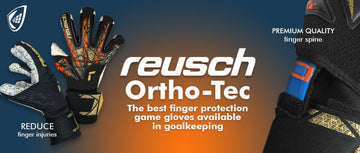
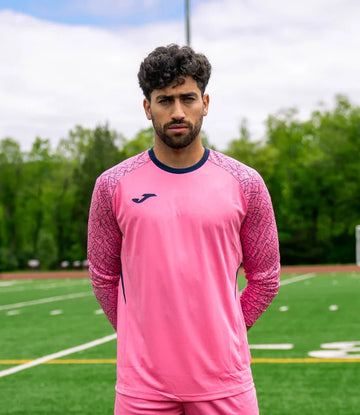
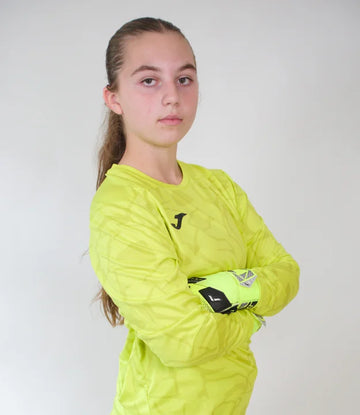
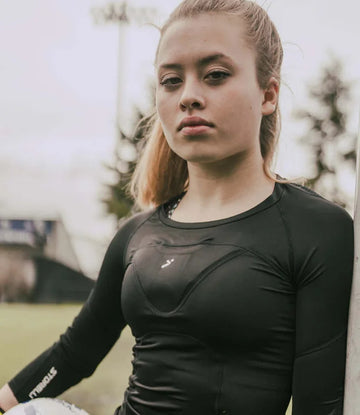
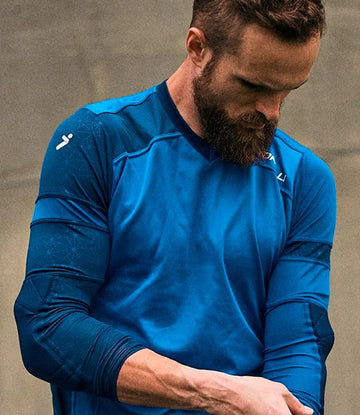
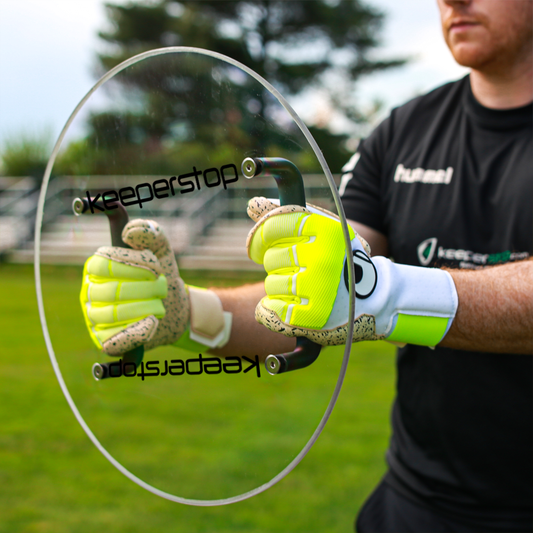
 Gloves
Gloves
 Jerseys
Jerseys
 Gear
Gear
 Brands
Brands
